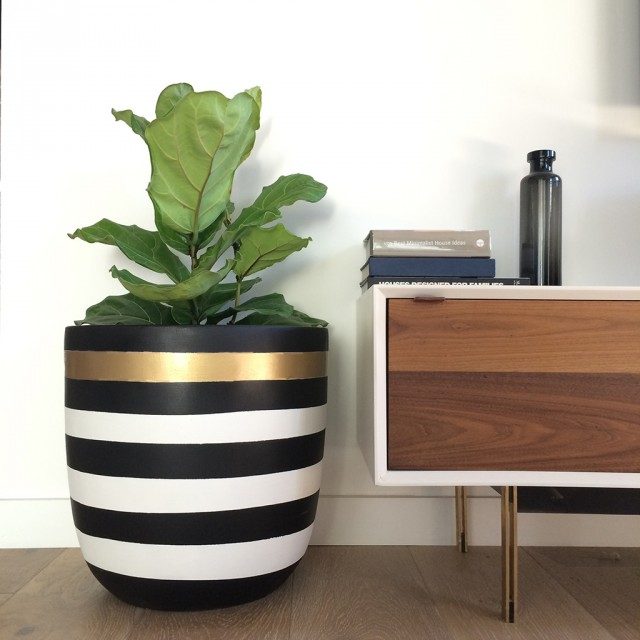By Richard Unsworth
The fiddle leaf fig, fiddler fig, or if you want to get really technical – Ficus Lyrata. The uber ‘it’ plant of the last five years. Surely it’s the only house plant with its own waiting list (Garden Life has a long one)? So just what is it about them that makes many folk go completely la la and want to part with hard earned, cold, hard cash in order to have one?
Is it that their deep lustrous, verdant hand-sized leaves just look so good in any interior space? Is it the big bold burst of green that contrasts so well with our modern interiors? Whether it be industrial minimal, pretty-pretty or contemporary luxe – the fiddler fig seems just so right anywhere you choose to place it.
Whether we like it or not, indoor plants are back with a vengeance, but unlike the previous decades where more was more, it’s now about one major floor specimen, and the fiddler fig is still definitely numero uno.
I love it when they start to get bigger, much bigger, as they begin their transition into mini indoor trees. As they mature, the lower leaves will drop off and the stems take on tiny trunks. Re-potting them into larger pots is the key to enduring growth and it’s easy to get this effect inside given the right conditions.
Garden Life constantly struggles to keep up with demand, partly due to the plants’ slow growing nature – the nurseries can’t physically grow them quick enough, and we are constantly working the phones with our growers, trying to sure up supply, checking their growth and availability.

I think some of our growers do quietly smile at our inner city houseplant addiction, remembering a time 10 years ago when they had greenhouses full of them and couldn’t actually give them away – can you actually imagine such a time?
When they are healthy and vibrant, there is nothing that can touch them, so to ensure your new friend always looks its best, check out my tips:
- F.Figs love a well-lit position indoors, so select something else if you have a dark space – consider the rubber plant (Ficus Elastica ‘burgundy’) or a Kentia Palm.
- F.Figs don’t need to be constantly moist, let them dry out between watering – but you must water them well – as a general rule, once a week is sufficient.
- Best take them outside, in a shower, or atop a sink, so you can water well and the water can freely drain out.
- If it’s really dry (stick your finger in, does it feel dry? Dry potting mix will not stick to your finger) you may need to dunk/soak it in a large bucket for a few hours.
- Use a liquid feed, such as Nitrosol or house plant food every two weeks during spring/summer – so one week water, the next week feed it, next week water, etc.
- If you want your F.Fig to grow ‘tree-like’ and touch the ceiling, consider re-potting your fig into a larger plastic pot, using best quality premium potting mix– they will love you for it and put on lots of new growth.
- If yours now looks like sad sticks, (RIP) it may be curtains, but try taking it outside, in a morning sun position, or filtered light under a tree, water it, feed it, talk to it, get on your knees and pray godammit! It should come back, just a little slowly.
–Richard Unsworth is a renowned garden designer, writer and traveller. He is also the owner of Sydney’s iconic outdoor store, Garden Life, and has played a part in Australia’s landscape design scene for the past 15 years.










